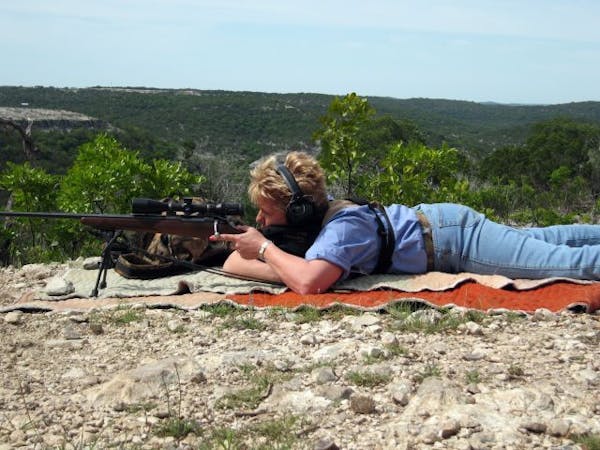It is the responsibility of every deer hunter to follow up each time the trigger is pulled or an arrow is loosed.
My deer hunting friends and I learned early on that sometimes we must go to extremes to recover deer we have targeted. I once arrowed a doe during a November snowstorm and followed a meager blood trail for more than a mile. When the deer crossed a river, I stripped from the waist down, waded across the icy water, and eventually found the animal just a few yards into the willows on the far bank. The jubilation of recovering the deer is forever etched in my mind; I don't recall how I reacted to the cold water.
An entire book could be written on the dos and don'ts after a shot is fired at a deer, and each scenario often requires a different approach. There are, however, several key factors to consider.
First, be absolutely certain to mentally mark the spot where the deer was when you shot. Archers are aware a deer usually runs off when hit by an arrow, but some firearms hunters assume a deer will just tip over when hit by a bullet. Not true. Unless the bullet strikes the brain or spinal cord, most deer will run at least a short distance even when hit by a well-placed bullet. And it is a mistake to believe a deer -- hit or missed -- will react in a certain way.
Always assume you hit the animal and follow up each shot. Yes, some deer will show signs of being wounded, but you shouldn't count on it. Remember also to continue shooting as long as the deer is on its feet.
Don't move from the location of your shot until you are positive you can walk directly to the place the deer stood. After your shot, take a few moments, gather yourself and study the area in detail. Everything looks different from the ground so use several landmarks to help guide you to the exact site. Also make a similar mental note of the spot where the deer disappeared.
Now that you've arrived at the location where the deer stood, look for signs of a hit. Study the area for hair, blood, bits of bone or meat. If you are a bow hunter, try to locate your arrow. Don't give up until you are certain you missed. Walk carefully in the direction the deer ran and look for any clues that might help you stay on the trail.
In the absence of blood look for scuff marks from the deer's sharp hooves, or overturned leaves. On clear, cold mornings it is sometimes possible to follow a deer by noting where the frost has been disturbed. When trailing a deer at night employ a powerful flashlight and carry extra batteries.
Let's assume you found blood. Note the color of the blood (bright red or dull red) and whether the blood contains bubbles, which would indicate a lung hit, or food matter, which means the stomach or intestines were ruptured.
Walk beside the trail so you don't disturb any sign and mark each blood spot. I tie a short strip of bright pink surveyor's ribbon to a branch. Toilet paper works well, too, as long as conditions are dry. Plan to retrieve your trail markers later.
Don't quit just because a blood trail is sparse. Even a mortally wounded deer sometimes leaves little or no blood. If you do lose the trail, go back to your last marker and start again. Look for blood not just on the ground but on bushes and tall grass.
A wounded deer usually takes the easy route (staying on trails and traveling around obstacles such as blowdowns). If the blood trail shows the deer is meandering left or right, that often means it is preparing to bed down.
Wounded deer almost always bed in some type of ground cover such as a downed tree top, or more often, in tall grass. If you lose the trail, methodically check any nearby swamps. Keep an eye out and an ear open for concentrations of crows, ravens and bald eagles. The winged scavengers often find your deer before you do.
Be persistent. Pay attention to detail and learn as you go. Get help if you need it. Without experience, nobody is an expert. Give it your best. You owe it to the animal, and ultimately to yourself and the practice of deer hunting.
To hunt means to be responsible for the hunted.
Bill Marchel, an outdoors photographer and columnist, lives near Brainerd.

Souhan: Only one Timberwolves player showed up ready in Game 4 loss

Wolves backfire: Meltdown before halftime lets Denver tie series
Charter flights for WNBA road games was an early Mother's Day gift for players with children
Wolves' Gobert again makes money gesture after Scott Foster foul call

